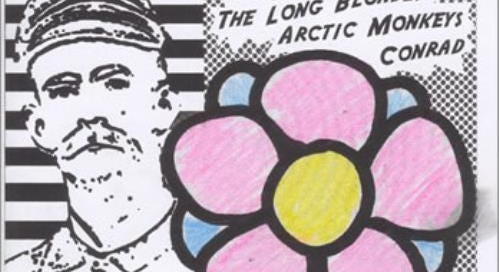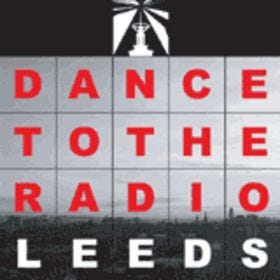The Imaginary 'Cut Off' Point
Having worked on the manuscript for six years, I should know when to stop. But does any creative actually know where the 'cut off' point is to whatever they're working on?
I'd argue that most creatives struggle to work out where the ‘cut-off’ point is. Whether wrting a book, composing a song, or painting their latest work, it proves difficult to work out when to stop. When your masterpiece is complete. When to press submit. When to put down the paintbrush.
The Final Interviews
At the last count, my manuscript totalled 160,000 words. You would have thought that's enough yet after allowing a friend to read the manuscript, he rightly suggested I interview a few more people to talk about the Leeds scene to balance it up. Fair enough, I spent most of my time in Sheffield. So far, one interview has been transcribed and used for quotes. Another is scheduled for sometime this month, and two more potential respondents have responded positively.
Of course, every time I complete an interview, the interviewee suggests someone I have yet to think of speaking to. And on and on we go. Politely, I respond "Oh yeah, I hadn't thought of them" but deep down I'm annoyed that there might be another person I should speak to and the manuscript will never be truly complete until I do. The imaginary ‘cut off’ point has just become a little further away.
Privately, I knew I needed to speak to more people, specifically those based in the Leeds music scene, as the narrative was lopsided in favour of Sheffield. It wasn't a point I could disagree with when it was brought up. There are now three individuals I truly want to speak to, one of which is happy to speak to me. Another is not responding to messages so I have listened to a podcast for quotes so at least he's included and talking on subjects I was going to ask him about anyway. The last one is a 'that would be nice but not essential' interviewee.
Then I'll stop.
The Cast of Characters
The manuscript is already large enough without thinking there are tens more people I need to speak to. There certainly seems to be enough research in there, even on the rare occasion when I read an article that might be relevant to the narrative. Maybe something about the decline of grassroots music venues (that’ll be useful for the Epilogue) or an interview from back in the day that offers some timely perspective.
The issue there is not always a question of whether to add it as research but how long it’ll take me to alter the lengthy list of references. There are 200+ for one part of the book, imagine adding an increment of one to each reference that follows in the manuscript and the list of references itself. Honestly, it takes HOURS as it's so long.
Granted, there are formatting gremlins that I find myself sorting out each time I add something to the manuscript too. This time it was ensuring that the name of publications appears in italics and noting each individual that is quoted from an alternative source is mentioned in the 'Cast of Characters' (more about them in a future post) and marked with an asterisk. I've drawn the line with reviewers as they’re not essentially being quoted with their reviews, their words are the output of them merely doing their job as journalists. An excerpt from a music review is more like reporting than someone offering their opinion in the form of a genuinely worthy quote.
Looking back at the list, I’m proud of managing to speak to so many people. Many of whom were on a wishlist. A lot of them will be unfamiliar names as they were (or still are) working in the background of a music scene who rarely get interviewed for the work they did. Imagine a music festival lineup, the headline acts are the draw but there's so many other individuals that are worth checking out.
Explaining The Infrastructure
Part of the appeal of the book, or at least I hope so, is to provide an insight into how a music scene happens. Sure, you need bands to produce great songs and they’ll hog the headlines but you also need a functioning infrastructure for those bands to get seen.
You need club nights to showcase the music run by passionate individuals who have to organise a space for fans to congregate, appealing bands to play, marketing to advertise the night, and a DJ to play the songs. Week on week in most cases. Like Penny Blackham at Fuzz Club in Sheffield or Dan Lomax as a DJ at Gigantic in Leeds.
You need gig promoters to run grassroots venues that offer a stage for these bands to perform. More often than not, these promoters will lose money on the nights when they showcase local, up-and-coming talent. They stick with it as they know that these bands need to hone their stagecraft in front of a live audience, not just their mates and not just in rehearsal rooms. Think Chris Wilson at The Boardwalk in Sheffield or Nathan Clark at Brudenell Social Club in Leeds.
Oh yeah, you also need cheaply available rehearsal rooms. Usually in otherwise vacant industrial spaces and run by people not looking to make a profit. Both Sheffield and Leeds did well from reusing spaces made vacant from the demise of industry. Think Bruce Works in Kelham Island before the area became a hipster hotspot or what was once a spoon factory at Portland Works. Or even what was once a studio that now lies empty as was the case for The Cribs and Springtime Studios in Wakefield.
What may have been a telling factor for both Sheffield and Leeds was the possibility of bands being able to record and release their music cheaply. Leeds had Dance To The Radio who released early singles from ¡Forward, Russia! and The Pigeon Detectives. They were also quick off the mark with a compilation CD in 2005 that featured The Sunshine Underground, This Et Al, and ¡Forward, Russia!
Sheffield had Alan Smyth at 2Fly Studios who pretty much got down the early demos of every up-and-coming local band. Then there was Thee SPC who were there to release singles, most prominently from The Long Blondes, on thick slabs of colorful vinyl. Via their fanzine, Thee Humbug, the label was also the first place to legitimately put an Arctic Monkeys track on a free CD, not one ripped by fans.
Of course, I also interviewed band members, fans, members of the music press, and even DJs. Most who read the book will likely fail to recognise most of the individuals I’ve interviewed. However, once they have read the book they should have a full picture of how the infrastructure operated. How the music was produced, how it was publicised, and how it got out there. That’s why I chose them.
The ‘Cut Off’ Point Makes Itself Known
I'm actually hoping that the 'cut-off' point makes itself known. Perhaps a publisher will tell me to stop and offer me a deal. Perhaps the manuscript will top 200,000 words, which is a nice round number. Perhaps WWIII will begin and I'll simply deliver electronic copies to those who ask for one.
After adding the quotes from the latest interview I did go through the manuscript and was pleased with what I read. There are times when I hear about a band, a venue, or an event and wonder if I included it. Most of the time, I have. The manuscript is not a complete account, none of them truly are, but it's bursting full of anecdotes and well-researched goings-on. I'm rather proud of it.





